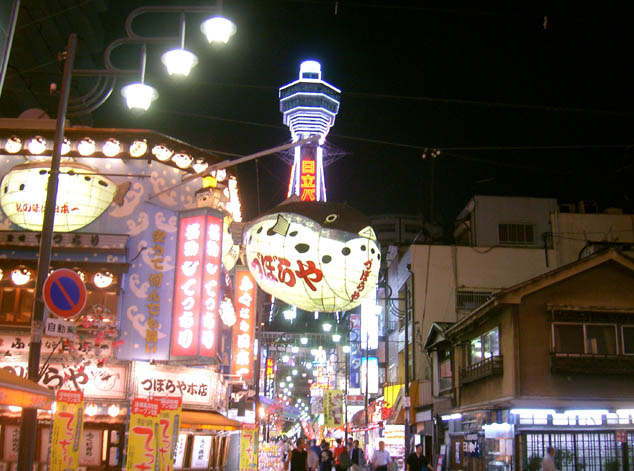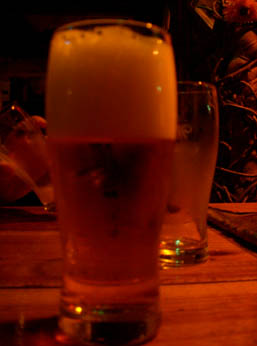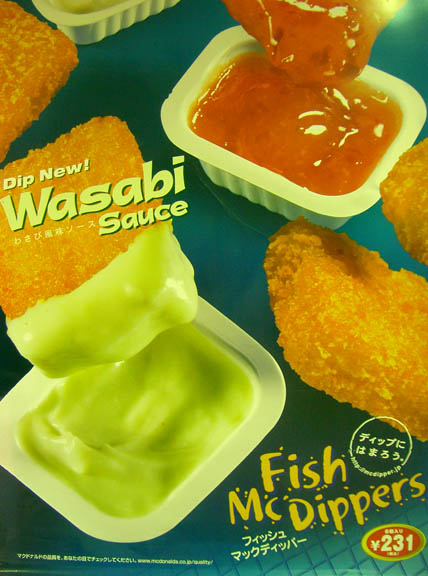Go check out the Evil Sandmich’s continued writings on his adventures in Japanese cuisine last year: LINK
Excerpts:
One morning they had a little hit of ketchup with the Japanese omelet (which I never got tired of, the omelet or the ketchup) and I was as happy as a brain eating zombie (I was quite tired and didn’t realize it, but my wife said that I was sucking the contents out of the packet). I got the definite impression that the Japanese don’t make a habit of coating their food with anything (ketchup, BBQ sauce, gravy, or even wasabi).
The relative lack of condiments is something you get used to, or if you’re a condiment/spice/topping addict, deal with by carrying around your own. Actually, condiments are a lot more prevalent than they were in years past. It used to be damn near impossible to get ketchup with your fries – at McDonalds!
Japanese Condiment Factoid o’ the Day: Up until about five years ago it was common for restaurants (even large chain or “family” restaurants) to refill partially depleted Tabasco bottles – with soy sauce! The resulting mix looked like uranium sludge, and tasted about the same (and no, it wasn’t that the Tabasco was just old, either). I assume this vile dilution was carried out by the restaurants as a cost-savings measure, but I have no proof – maybe it was a ploy by the Tabasco distributors to create a more “localized” flavor for the Japanese market (and if Tabasco adds an “Oriental Pepper Sauce” to their lineup, you will know where they got the idea).
Also on the beef night, I had something for the first time during the trip – raw squid. Now I don’t mind the cooked kind, and the flavor didn’t bother me, but the texture…. The most polite way of putting it is, imagine if a stranger hocked up a big, thick, mildly fishy loogey and put it in the fridge, and the next night you accidentally dined on it.
Raw squid is best when it’s very fresh and is called “ika sashimi”; even when refrigerated, it starts degrading rapidly and after a short time becomes what I usually refer to as “bait.”
Also, the phrase “mildly fishy” never fails to evoke terrifying memories of a certain teacher I had in junior high who had recently immigrated from Germany. Her impressive bust and fondness for wearing tight, short-sleeve summer dresses was set off by the fact she had the hairiest armpits I’ve seen in my entire life, which dripped sweat in the summer when she raised her arms to write on the blackboard. Just thought I’d share that.
To add insult to injury, they were served in a bowl with cold, greenish noodles that were about the same texture as the fish (sans eyes of course). I hesitantly ate my ‘snot noodles’, but I couldn’t bring myself to choke down the fish snot sitting at the bottom of the bowl, it makes my stomach light just thinking about it.
Heh. Damn, this brings back memories from when I first came to Japan. Yep, there were some “delicacies” that I wouldn’t touch with a stick back then, although I got used to most of them quickly. There are a few things I still don’t like, but there isn’t much I haven’t tried or given a fair shake, even the stuff mentioned in the story below:
Some years ago, I took some clients from the US out for dinner, and one of them, was adamant about trying every “strange” dish possible.
Thus challenged, I ordered accordingly. I have to admit that he seemed to be genuinely enjoying everything that came until I pulled the trump card and told him the next dish was a specialty of the house, and I bet he couldn’t tell what it was:
CLIENT (pleasantly surprised): “Mmm, it’s creamy.”
ME (factually): “Yes, and it’s white, too.”
CLIENT (savoring a larger bite): “It’s kind of sweet.”
ME: “Dude! Your mouth is full of COD SPERM!”
……..
What can I say? I am here to serve.




